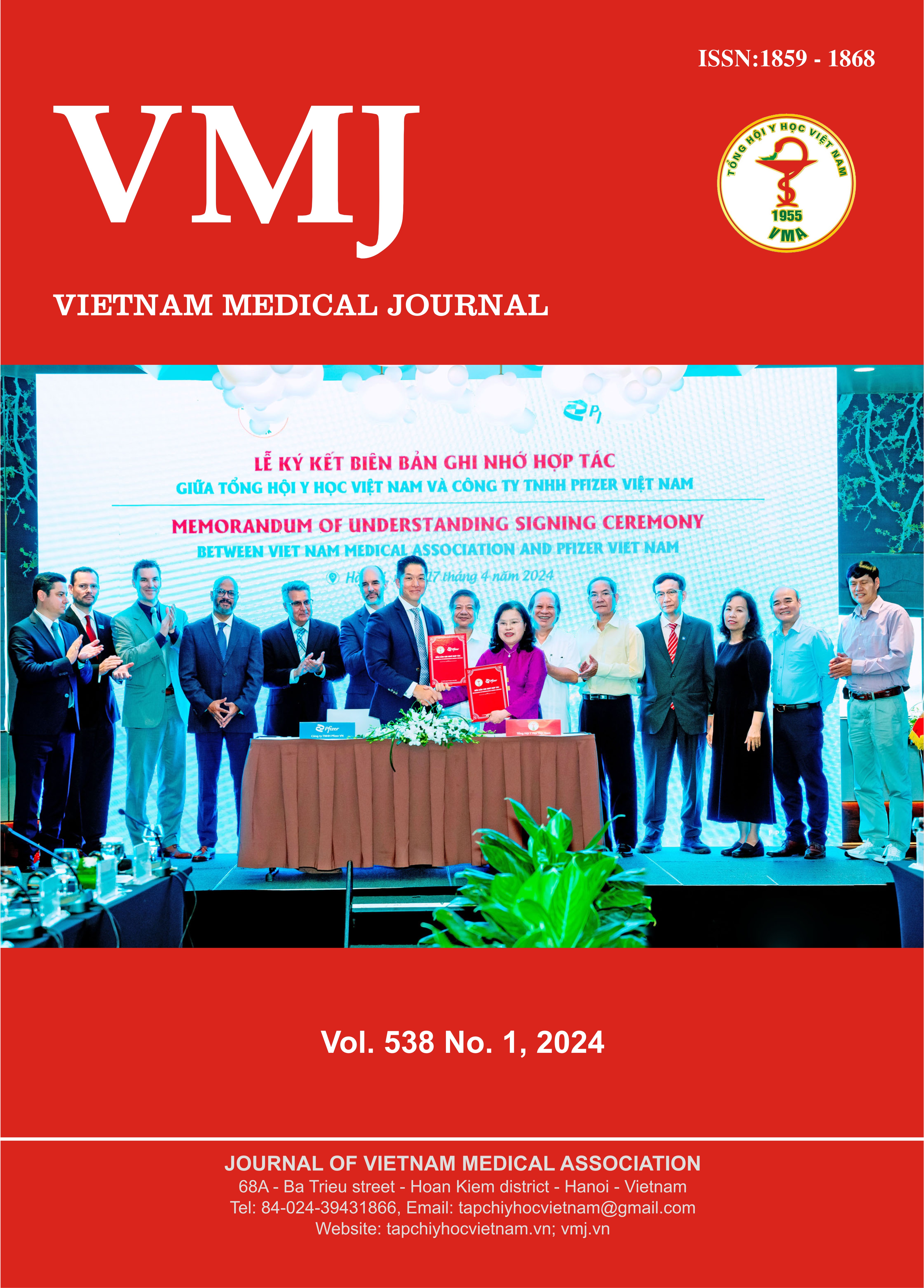SOME CLINICAL CHARACTERISTICS OF ADULT PATIENTS TREATED BY OSTEOSYNTHESIS METHOD FOR THE PROXIMAL HUMERUS FRACTURE
Nội dung chính của bài viết
Tóm tắt
Objectives: To describe some clinical characteristics of adult patients with closed proximal humerus fracture (PHF), treated by osteosynthesis method with locking plate. Subjects and methods: Adult patients who were closed PHF treated by open reduction and locking plate fixation at Military hospital 175. Report of a retrospective study conducted on 42 clinical cases. Results: The average age for both gender was 51.38 ± 14.63, the age group over 60 accounted for 26.19%. The ratio of female/male patients was 1.1/1, the difference was not statistically significant (p>0.05). The cause of injury due to traffic accidents (TA) accounted for the highest rate at 73.81%, due to daily life accidents (DLA) accounted for 21.43%, and due to work accidents (WA) accounted for 4.76%. Anatomical damage of PHF according to the classification of author Neer C.S. on X-ray, including groups III, IV, V, VI, 3-part fractures accounted for the highest proportion with 54.76%. Conclusion: The patients in the study group were mostly middle-aged from 18 to 60 years old. The main cause of TA was the age group from 18 to 60, which was the group with a large traffic demand (accounting for 80.64%), the majority of injuries had 3-4 broken parts (accounting for 61.29%), due to DLA, mainly in the group of people over 60 years old (accounting for 55.56%) with 3-4 broken parts accounting for 66.67%.
Chi tiết bài viết
Từ khóa
Upper limb, proximal humerus fracture, osteosynthesis
Tài liệu tham khảo
2. Nguyen Duc Vuong (2021) Research on anatomical damage characteristics and treatment results of proximal humerus fracture with locking plate, Doctoral thesis, Vietnam Military Medical University.
3. Mafi R., Khan W., Mafi P., et al. (2014) Orthopaedic approaches to proximal humeral fractures following trauma. Open Orthop J. 8:437-441.
4. Hessmann M., Baumgaertel F., Gehling H., et al. (1999) Plate fixation of proximal humeral fractures with indirect reduction: surgical technique and results utilizing three shoulder scores. Injury. 30 (7):453-462.
5. Hettrich C.M., Boraiah S., Dyke J.P., et al. (2010) Quantitative assessment of the vascularity of the proximal part of the humerus. J Bone Joint Surg Am. 92 (4):943-948.


